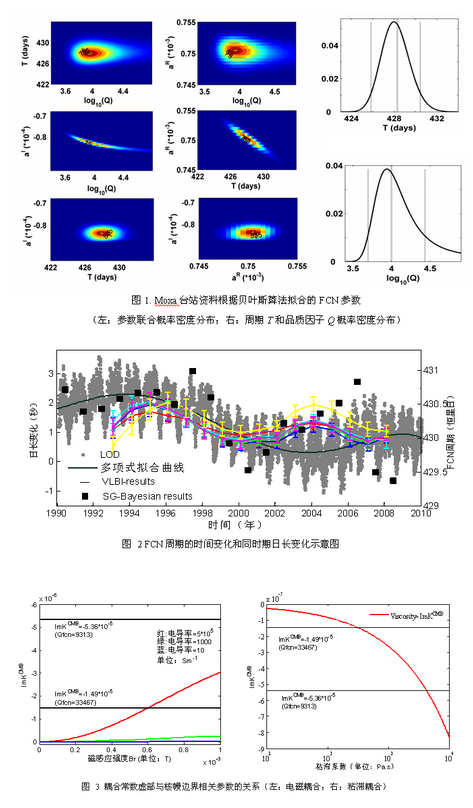The core-mantle boundary is one of the most important boundaries of the earth’s interior; it plays an extremely important role in the earth’s surface dynamics. The free core nutation (FCN) of the earth’s fluid core represents the dynamic progress of the earth’s interior, and the physical information contained serves as important constrains of the structure of core-mantle boundary. Generally we get to know the structure of the earth’s interior through seismology, while the geodetic technologies developed in the recent decades (including high precision GWR superconducting gravimeter SG and very-long-baseline interferometry VLBI) supply another efficient methods for detecting the earth’s interior and dynamics. At present the global SG and VLBI network can supply high quality data for FCN research.
The research group ‘physical and dynamic problems in the earth’s interior’ of Institute of Geodesy and Geophysics, Chinese Academy of Sciences, studied the resonance of fluid core using multi-station lamination technology and acquire resonance parameters (including eigenperiod and quality factor Q), based on the SG data of Wuhan Lijiang and Lhasa, as well as the SG data supplied by Global Geodynamics Program (GGP) and the nutation data of the International VLBI Service. They calculated the joint probability density distribution of resonance parameters using Bayesian algorithm, the precision of parameter estimation is improved and results of the European station Moxa is illustrated in Fig 1. They also compared the temporal feature of eigenperiod of FCN and length of day (LOD) acquired by VLBI and SG, the results show a temporal variant of ten years (Fig 2). In addition they provide the relationship between core-mantle coupling constant and magnetic induction conductivity as well as the relationship between core-mantle coupling constant and viscosity (Fig 3). The results show that when merely considering electromagnetic coupling, the conditions of dissipative coupling constrained by FCN are the conductivity of mantle bottom reaches 5×105S/m level and the radial component of magnetic induction Br greater than 0.6 mT. While when considering only viscous coupling the condition is the coefficient of viscosity within the range of 2.5×102~3.1×105 Pa·s.



